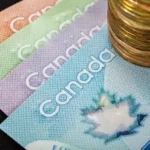By Elizabeth May, elizabethmaymp.ca/ how-bad-can-the-tpp-be, May 18, 2016
There are several layers of offences in the thousands of pages of the Trans-Pacific Partnership Agreement. Some are embedded in the inferior bargaining positions in which Canada found itself as the former Prime Minister rushed to catch up with a train well and truly leaving the station. The others are part and parcel of the, now ubiquitous, investor-state provisions of the treaty.
The first group of flaws has a lot to do with Canada joining the talks when they were already quite far advanced. We started from a very weak negotiating position on a wide range of trade issues – from the auto sector to the patent protection of prescription drugs to intellectual property protection – and from that weak position, we caved. The US auto sector gets protected far longer from Japanese competition than their Canadian counterparts. The cost of Canadian pharmaceutical drugs will soar. And the potential for Canada to excel in the ideas economy is kyboshed while those new economic winners in the virtual economy are enshrined in their existing power position. Canada will be frozen out. As Jim Balsillie, founder of Research in Motion, told the trade committee, Canada will be a “colossal loser” under the TPP. The game will be fixed and we will not have a seat at the table. His advice to Canadian innovators if the TPP goes through? Move to the US and start your business there.
Which is quite the observation when one considers what US economists are saying about the TPP. Nobel Prize winning economist and professor at Columbia University, Joseph Stiglitz describes the TPP as “the worst trade deal ever.” Not the worst deal for Canada – the worst deal ever for the United States too. And the US negotiators struck a much better deal.
Stiglitz observes that the TPP is not really a trade deal at all. It is about managing trade in a way that benefits a new global regime of corporate rule and not the actual promotion of the trade in goods and services. In that sense it is not a traditional trade deal at all.
The alarm felt about the TPP in the US has much to do with the dawning recognition of how investor-state agreements work. The TPP is not the first one the US has entered into. The US has executed dozens of ISDS treaties. But unlike the first one, Chapter 11 of NAFTA and unlike ones between the US and Ecuador or the US and the Philippines, this is an ISDS in which the US might actually lose. The reality of these provisions, that allow a foreign corporation to bring arbitration suits against governments that enact changes that have the incidental, even if unintentional, effect of reducing a foreign corporation’s profits, is that the arbitration is neither fair nor neutral. Almost every single case is resolved in favour of the larger economic power. So if it is a case between a US corporation and the Canadian government, or between a Canadian corporation and the US government, the US is about 95% likely to win – whether state or investor. But the TPP opens up the chance of other serious economic players being able to bring arbitration cases against the US.
The political debate over TPP has separated Hilary Clinton from Obama’s legacy. She has come out against the TPP, and so has Trump. It will make no sense at all to ratify a treaty that the US may not ratify.
Meanwhile, the debate gives us a chance to re-examine all of the investor-state agreements. They are offensive and anti-democratic by their very nature. They have nothing to do with trade promotion or protection of the assets of foreign investors. They are all about the erosion of the ability of sovereign states to act in the public interest. The ability to act in the public interest remains, but is forever constrained. Profits of foreign corporations will trump acting in the public interest. That such an unholy and outrageous scheme could be elevated to “routine” is shocking. The CETA agreement with the EU now boasts a new approach – setting up an Investment Court. Don’t be fooled. It is no different than its predecessors. It has some window dressing, but fails to remedy the central objectionable feature of ISDS agreements. Whether under the CETA approach, NAFTA or the CanadaChina Investment Treaty, foreign corporations are given extraordinary rights to demand compensation when a government – municipal, provincial or federal – acts in a way that reduces a foreign corporation’s expectation of profits.
We need to engage a global process of re-negotiation of all ISDS. Canada should open the dialogue about the creation of a rebalancing of nation state rights versus corporate rule. We should propose within the WTO the creation of a model agreement to protect the legitimate interests of the investor and the protection of domestic sovereignty. With the litany of perverse decisions accumulating under these agreements, we should find many countries willing to demand a new approach leading to the replacement of all current ISDS agreements.
Meanwhile, we start by saying “no” to the TPP.
Originally published in the Hill Times.
In the avalanche of research on what Britons want, one study last week plugged pension data into a forecast not only of preference by age but also average lifespan. Britain’s youngest voters, 18-24, it projected, would endure the consequences for an average of 69 years. Those 65 and older, on average, will be gone in 16.
Beyond anger, frustrations erupted among British teens that as recently as last year thought enfranchised democracy might soon include them. A 2015 bid to lower the voting age to 16, backed by Labour, the Liberal Democrats and the SNP, looked to have a chance – until the government shut it down, citing cost.
British writer George Chesterton, among many others, saw the generational chasm coming – and took cheekily to the pages of British GQ with a completely absurd call for a “total ban on anyone of retirement age voting in the EU referendum as the only way of stopping the Leave campaign.
“The idea hardened in me after a long conversation with my father, which included the words ‘conspiracy,’ ‘the central powers’ and ‘they hate us.’”
The fulcrum of Chesterton’s argument: “If a 15-year-old, whose entire economic and political future could be determined by the referendum, can’t vote, then neither should a 75-year-old, whose entire economic and political future could be determined by the fluctuating price of mince.”
On twitter Friday, Chesterton reposted the piece, adding: “Last week I wrote this as a joke. Now I’m not so sure.”
More’s the pity, then, as Britons hover today over the shattered torso of their modern-day Humpty Dumpty, wondering what next. Once an empire that outreached all, wielding a world-shaping hold over wealth and territory – it feels more like a broken nursery rhyme now. Its constituent pieces angry, jagged shards.
UK voters built a wall against Europe. A big, beautiful wall, you might even say. They climbed it. Proclaimed it. And then promptly tumbled off in a fist-bumping pratfall for the ages.
The fractures are almost too many to count. Scotland and Northern Ireland, both now eyeing Brexits of their own to regain ties with Europe. If whatever glue emerges now doesn’t hold, that way lies the end of Britain itself, with only Little England and even Littler Wales left to wave the Disunion Jack.
And London, alone, with the young wanting what democracy has told them cannot be.





